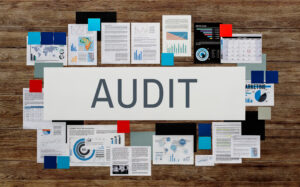htmlCopy code
ISO 9001: Driving Customer Satisfaction for Executives
Course Name: ISO 9001 Executive Overview
SEO Keyword: ISO 9001 Executive Overview
Introduction
Customer satisfaction is a key objective of ISO 9001, emphasizing the importance of meeting and exceeding customer expectations through effective quality management practices. For executives, understanding how ISO 9001 enhances customer satisfaction is critical for fostering trust, loyalty, and long-term success. This article explores the relationship between ISO 9001 and customer satisfaction, the role of leadership, and actionable strategies for executives.
Table of Contents
- The Role of Customer Satisfaction in ISO 9001
- How ISO 9001 Enhances Customer Satisfaction
- Leadership’s Role in Fostering Customer Satisfaction
- Strategies for Executives to Drive Satisfaction
- Benefits of Improved Customer Satisfaction
- Conclusion
- Frequently Asked Questions
The Role of Customer Satisfaction in ISO 9001
Customer satisfaction is a central tenet of ISO 9001, influencing every aspect of the quality management system (QMS). The standard ensures that organizations:
- Identify Customer Needs: Understand the requirements and expectations of customers.
- Consistently Meet Expectations: Deliver products and services that fulfill agreed-upon requirements.
- Enhance Relationships: Build trust through reliable and high-quality offerings.
How ISO 9001 Enhances Customer Satisfaction
ISO 9001 provides a systematic approach to improving customer satisfaction by:
- Standardizing Processes: Ensuring consistency in product and service delivery.
- Implementing Feedback Mechanisms: Gathering insights from customers to refine offerings.
- Promoting Continuous Improvement: Addressing complaints and enhancing processes to exceed customer expectations.
- Embedding Risk-Based Thinking: Anticipating and mitigating issues that could impact customer satisfaction.
Leadership’s Role in Fostering Customer Satisfaction
Executives play a pivotal role in driving customer satisfaction within the ISO 9001 framework. Key responsibilities include:
- Setting a Customer-Focused Vision: Articulating a commitment to customer satisfaction in the organization’s quality policy.
- Allocating Resources: Ensuring sufficient resources are dedicated to quality improvement initiatives.
- Monitoring Performance: Regularly reviewing customer satisfaction metrics and feedback to guide decision-making.
- Fostering a Quality Culture: Encouraging employees to prioritize customer satisfaction in their daily tasks.
Strategies for Executives to Drive Satisfaction
Executives can adopt the following strategies to enhance customer satisfaction:
- Engage with Customers: Maintain open communication channels to understand customer needs and concerns.
- Invest in Training: Equip employees with the skills and knowledge needed to deliver exceptional customer experiences.
- Leverage Technology: Use tools like customer relationship management (CRM) systems to track and analyze satisfaction levels.
- Incorporate Feedback: Actively use customer feedback to identify improvement opportunities.
- Recognize Achievements: Celebrate milestones in customer satisfaction to motivate employees and reinforce commitment.
Benefits of Improved Customer Satisfaction
Focusing on customer satisfaction through ISO 9001 delivers substantial benefits, including:
- Increased Loyalty: Satisfied customers are more likely to remain loyal and recommend the organization to others.
- Enhanced Reputation: Positive customer experiences build credibility and trust in the marketplace.
- Revenue Growth: Higher satisfaction levels often lead to repeat business and increased sales.
- Competitive Advantage: A strong focus on customer satisfaction differentiates the organization from competitors.
Conclusion
Customer satisfaction is at the heart of ISO 9001, offering organizations a clear path to building trust, loyalty, and long-term success. For executives, understanding and prioritizing customer satisfaction is essential to fostering a culture of quality and ensuring sustained growth. The ISO 9001 Executive Overview course provides leaders with the insights and tools needed to excel in this critical area.
Frequently Asked Questions
- How does ISO 9001 measure customer satisfaction?
The standard encourages the use of feedback mechanisms, satisfaction surveys, and performance metrics to assess customer satisfaction. - What is the role of leadership in customer satisfaction?
Executives set the vision, allocate resources, and monitor performance to ensure customer needs are consistently met or exceeded.
Contact Us for More Information
For further details about the ISO 9001 Executive Overview certification and training, visit our ISO 9001 Executive Overview page, our ISO 9001 Overview Consultants page, or register for the ISO 9001 Executive Overview course on our website. You can also contact us for more information.



